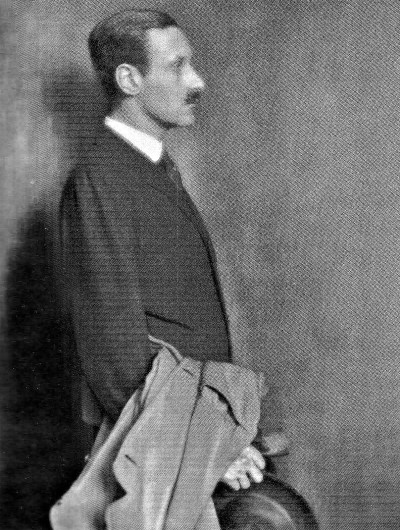David Adler (David Adler)

David Adler was born on January 3, 1882 in Milwaukee, Wisconsin to a German Jewish family. He was the only son to Isaac David Adler, a prosperous wholesale manufacturer of men’s clothing, and Therese Hyman Adler. David Adler had one sister, Frances, who would go on to become a prominent interior designer. He also had an older brother, Murray, who died in 1883 of diphtheria. Adler attended Milwaukee public schools until age 16, when he left Wisconsin to enroll in the Lawrenceville School in New Jersey. Adler enrolled at Princeton University in 1900, studying art, architectural history and Greek. Here, Adler designed a remodel for the Charter Club, an upperclassmen’s eating club. The source of Adler’s interest in architecture is uncertain. Adler began illustrating at Lawrenceville, drawing for school publications. Adler struggled at Princeton, but showed aptitude in his architecture class. After graduating in 1904, he traveled extensively, mostly studying and observing the architecture of Europe. He studied for three semesters at Technische Universität München in Germany. From 1906 to 1911, Adler studied at the École des Beaux-Arts. An avid bicyclist, Adler would travel to the countryside of France, Italy, and England to observe the great country manors and collect picture postcards.
After returning to the United States in 1911, he began working as an architect for Howard Van Doren Shaw in Chicago, Illinois. Shaw was considered the foremost architect of country houses in the Chicago area. After six months of study, he opened a new office with a friend from Paris, Henry Dangler, in Orchestra Hall. Together, the pair secured commissions for country estates for William E. Clow, Jr., Ralph Poole, Benjamin Niels, Morris E. Berney, David B. Jones, and Charles B. Pike. However, Adler had never received an architectural license, flunking the exam in 1917. Because of this, Dangler had to sign off on Adler’s drawings because they legally had to be signed by a registered architect. After Dangler died in 1917, Adler needed to partner with another architect with a structural background who could sign off on his projects. He pattered with Robert Work. In 1918, Adler purchased an 1864 farmhouse in Libertyville, Illinois and extensively remodeled it to for his estate. Aspiring architect Paul Schweikher, who would go on to have a significant residential practice of his own, studied under Adler for a year starting in 1923. In 1928, with thirty commissions to his name and support from fellow architects, the state examining board presented Adler with an honorary license. From this point forward, Adler operated his practice alone. The Roaring Twenties was Adler’s most prosperous time, but he struggled during the subsequent Great Depression. An injury in 1935 during a fox hunt further slowed Adler. Also that year, Adler met with Jerrod Loebl and John A. Holabird, who were commissioned by the Armour Institute of Technology to find a new head of architecture for the school. Adler recommended Ludwig Mies van der Rohe, who was eventually selected for the job. Over his career, Adler designed 45 country houses, 27 in the Chicago area.
He married Katherine Keith, an Illinois socialite and writer, in 1916. In 1925, he was named a trustee of the Art Institute of Chicago, a position that he held for the rest of his life. He became a widower in 1930 after his wife was killed in a car accident in Europe. Adler was named a Fellow of the American Institute of Architects in 1941 and a member of the National Institute of Arts and Letters in 1945. Adler died of a heart attack in his sleep, aged 67, in Libertyville. He is buried in Graceland Cemetery in Chicago. Adler’s religious beliefs are uncertain, although he certainly attempted to appear Protestant. His parents were German Jews. However, at Technische Universität München, Adler identified his beliefs as Episcopalian; this may have been due to the discrimination that faced Jews at the time. Adler married Katherine Keith in a Universalist church. Adler’s father was cremated—a funeral rite that was not sanctioned by the Jewish religion—and interred at a non-denominational cemetery owned by the Episcopal Church. His mother was also buried in a non-denominational cemetery, indicating that his parents may have similarly downplayed their Jewish faith or converted entirely. Adler’s clientele were mostly Presbyterian and probably would have not knowingly commissioned a non-WASP to design their houses.
Born
- January, 03, 1882
- USA
- Milwaukee, Wisconsin
Died
- September, 27, 1949
- USA
- Libertyville, Illinois
Cause of Death
- heart attack
Cemetery
- Graceland Cemetery
- Chicago, Illinois
- USA

